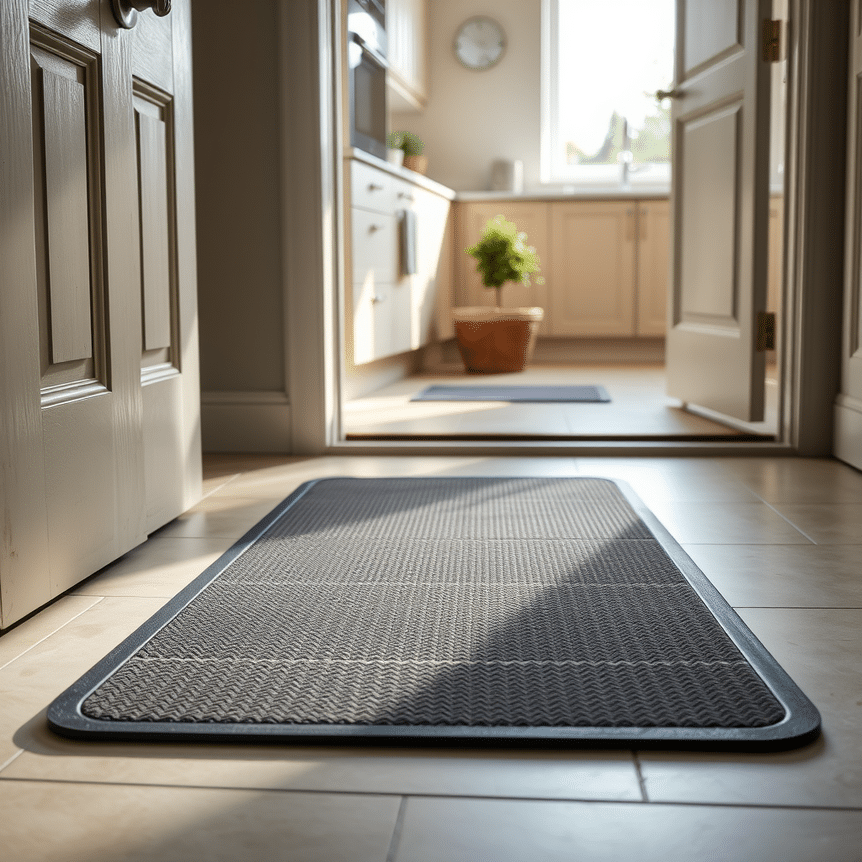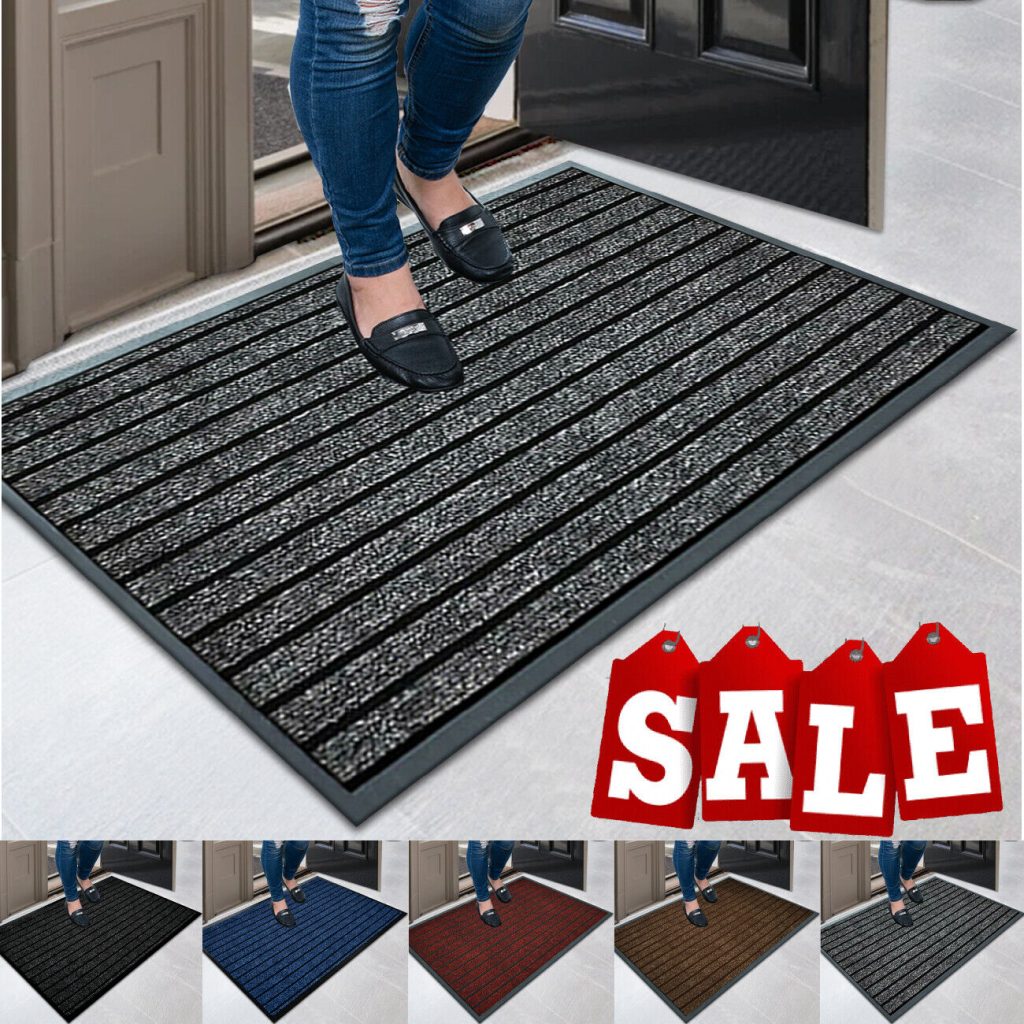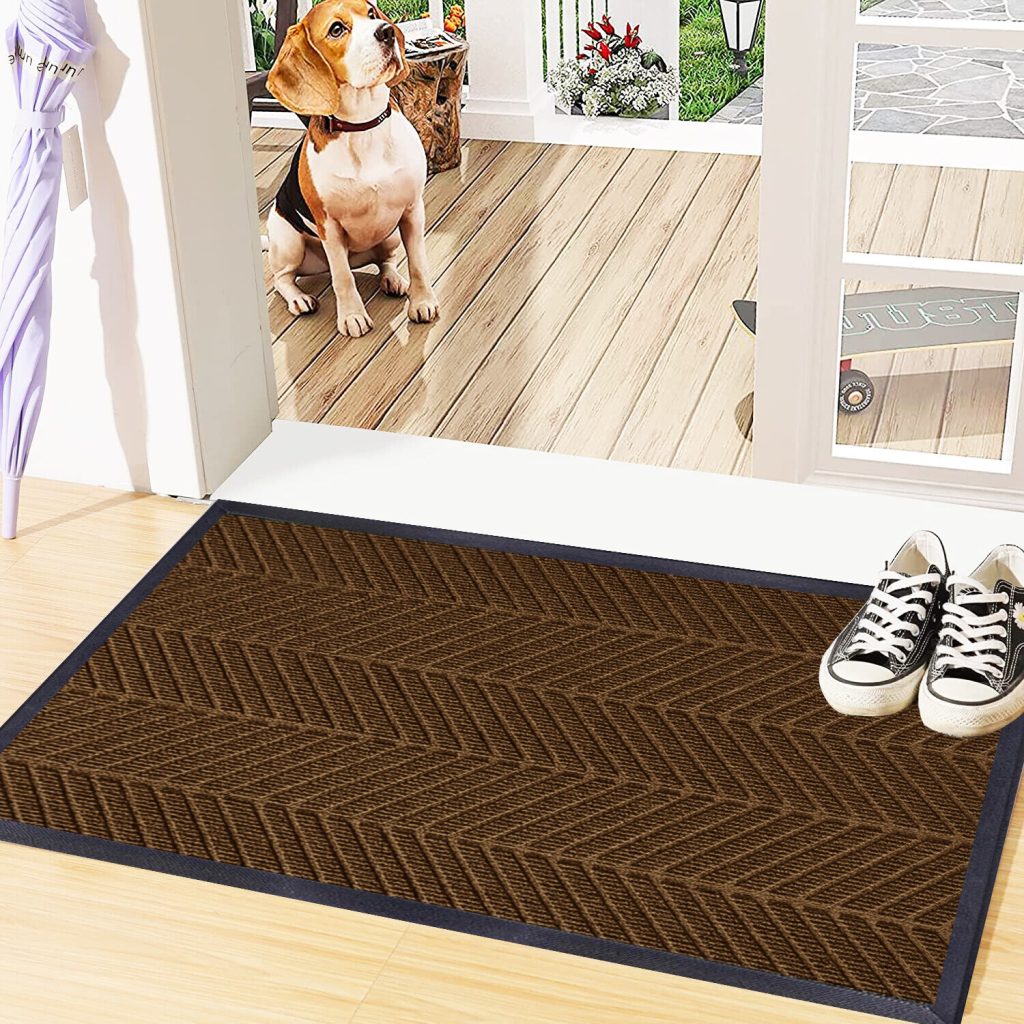Maintaining non-slip rubber mats in the UK requires specific knowledge tailored to local weather conditions and mat types. This comprehensive guide explains how to clean rubber mats in the UK effectively, ensuring safety, longevity, and optimal performance.
Why Proper Care of Your Rubber Mats Pays Off in the UK Climate
Non slip rubber mats are essential safety features in homes, workplaces, and vehicles across the UK. Regular maintenance of these mats is critical to:
- Prevent Slips and Falls: Accumulated dirt, mud, and moisture significantly decrease grip, increasing accident risks in busy areas.
- Extend Lifespan: The UK’s frequent wet and muddy conditions accelerate mat wear if neglected. Proper care protects your investment.
- Maintain Hygiene: Clean mats prevent the growth of mould, mildew, and unpleasant odours, especially in damp indoor spaces or car interiors.
- Enhance Appearance: Well-maintained mats uphold the cleanliness and professionalism of any environment, from your entryway to your office space.
Given the UK’s variable weather—ranging from persistent rain and frost to muddy terrain—rubber mats endure constant exposure to grime and moisture. This results in challenges like embedded dirt, road salt residue, and mildew growth. Consistent cleaning and upkeep help ensure your mats remain effective safety tools, providing reliable slip resistance whether inside homes, offices, or vehicles.
Simple Daily Cleaning Steps for Rubber Mats in UK Homes
Initial Debris Removal
- Shake Out Loose Dirt: Take the mat outside and vigorously shake it to dislodge soil, stones, leaves, and other debris embedded in the surface. This prevents scratching during washing.
- Vacuum or Sweep: For finer particles, use a handheld vacuum or a stiff-bristled brush to dislodge dust and fine grit stuck in the mat’s grooves and textured patterns.
Gentle Washing
- Clean with Mild Detergent and Lukewarm Water: Prepare a solution of a gentle, pH-neutral detergent (avoid harsh chemicals) with lukewarm water. Using a soft cloth or sponge, gently wipe down the mat. This balance prevents rubber damage while effectively removing surface grime without leaving residues.
Thorough Rinsing and Drying
- Rinse Thoroughly: Use a hose or a bucket of clean water to rinse all detergent residues away. This step is especially important in damp UK conditions where leftover soap can attract dirt and foster mould.
- Dry Completely: Hang mats in a well-ventilated spot or place them flat with sufficient airflow underneath. Quick and complete drying is crucial to prevent mildew or mould development, which is common in humid environments and can compromise the mat’s integrity and hygiene.
Regular Inspection
- Inspect Regularly: Routinely look for any signs of wear and tear, such as cracks, warping, curling edges, or thinning areas. These can compromise the mat’s safety and effectiveness, indicating the need for replacement.
This gentle, ongoing maintenance routine suits UK households handling daily mud and moisture, keeping mats ready to protect without causing premature damage or degradation.
Deep Cleaning Techniques: Removing Stubborn Dirt & Grime Safely
Preparation and Soaking
- Remove Loose Debris: Begin by thoroughly shaking or vacuuming the mat to remove as much loose dirt and debris as possible.
- Soak with Appropriate Detergents: Fill a large bucket, basin, or even a bathtub with warm water and a mild, rubber-safe detergent (such as a neutral pH soap or car shampoo designed for rubber). Submerge the mat for 15–30 minutes to effectively loosen stubborn dirt and grime embedded deep within its texture.
- Avoid Harsh Chemicals or Bleach: Crucially, never use harsh chemicals, abrasive cleaners, or bleach. These aggressive chemicals degrade the rubber’s chemical structure, leading to brittleness, cracking, discolouration, and a significant reduction in grip strength. Abrasive scrubbers can scratch and damage the textured surface essential for slip resistance.
Scrubbing and Rinsing
- Gently Scrub: After soaking, use a soft-bristled brush or a non-abrasive sponge to gently scrub the textured surfaces and deep grooves. Focus on stained areas or spots with particularly ingrained dirt.
- Rinse Thoroughly: Rinse the mat completely with clean water, ensuring all soap residue is removed. Leftover soap can create a sticky surface, attract more dirt, and encourage mould formation.
Drying for Longevity
- Dry with Airflow: Lay the mat flat outdoors or indoors in a well-ventilated place. Ensure there is good airflow around and under the mat. Avoid direct sunlight, as prolonged UV exposure can cause rubber to become brittle, crack, and lose its flexibility over time.
Step-by-step DIY deep cleaning summary:
- Remove loose debris by shaking/vacuuming.
- Prepare a warm water and mild, rubber-safe detergent solution.
- Soak mat for up to 30 minutes.
- Scrub gently with a soft brush or sponge.
- Rinse with clean water thoroughly.
- Dry flat in shade with ample airflow until fully dry.
These deep cleaning steps ensure grime is removed effectively without compromising your mat’s safety or durability, making them perfectly suited for the UK’s varied indoor and outdoor environments.
Tailored Cleaning for Different Rubber Mat Types: Porous vs Non-Porous
Understanding the type of rubber mat you own is crucial for selecting appropriate cleaning methods. Here’s how porous and non-porous mats differ and how to care for each, ensuring optimal performance and longevity:
| Feature | Porous Rubber Mats | Non-Porous Rubber Mats |
|---|---|---|
| Definition | Mats with tiny holes, channels, or an open-cell structure allowing water/oil absorption and drainage. | Solid rubber sheets with smooth, impermeable surfaces that repel liquids. |
| Common Examples | Outdoor entrance mats, anti-fatigue mats, commercial kitchen mats. | Vehicle mats (especially all-weather types), heavy-duty industrial mats, gym mats. |
| Cleaning Considerations | Prone to trapping dirt and moisture within their structure; require thorough rinsing and drying to prevent mould and unpleasant odours. | Easier to wipe clean as dirt sits on the surface; less prone to water absorption, making drying quicker. |
| Recommended Cleaning | Frequent washing and drying, occasional disinfection for deep-seated grime. | Simple wiping with mild detergent suffices for routine cleaning; occasional deep cleaning for accumulated dirt. |
| Maintenance Frequency | Weekly or after heavy dirt exposure, especially for outdoor use. | Bi-weekly or monthly depending on use, or as needed for spills and visible dirt. |
Vehicle and All-Weather Mats in the UK
Car mats frequently exposed to mud, road salt, and grime from the UK’s roads need tailored care. Porous car mats, often found in older vehicles or as standard carpet-backed options, benefit from regular shaking and gentle washing to remove trapped debris. Non-porous, all-weather rubber car mats, on the other hand, are best cleaned with water and mild soap, as their smooth surface makes cleaning straightforward. Regular cleaning prevents premature wear from abrasive road debris and harsh UK weather salts, maintaining your vehicle’s interior cleanliness and preserving the mat’s anti-slip features and overall safety.
Pro Tips to Maintain Your Rubber Mats for Longevity and Safety
Regular Maintenance Schedule
- Schedule Routine Cleaning: Establish a consistent cleaning schedule. For porous mats, cleaning at least once a week is recommended, especially if used outdoors or in high-traffic areas. Non-porous mats can typically be cleaned every 2–4 weeks or as needed, depending on their exposure to dirt and moisture.
- Seasonal Storage: If you use seasonal mats (e.g., winter-specific vehicle mats), store them properly during the off-season. Roll or hang mats in a dry, shaded area away from direct heat sources or prolonged UV light exposure to avoid cracking, warping, or degradation of the rubber material.
Product Selection and Usage
- Avoid Harmful Chemicals: Strictly steer clear of bleach, ammonia, strong solvents, oil-based cleaners, or abrasive powders. These aggressive chemicals degrade the rubber’s molecular structure, causing it to harden, crack, discolour, and lose its essential slip-resistant properties.
- Use Recommended Products: Always choose pH-neutral, rubber-safe detergents or cleaners specifically designed for rubber products. For trusted cleaning solutions and high-quality mats, explore Rugstars’ Non-Slip Heavy Duty Rubber Mats products and associated care tips, designed for durability and effectiveness.
Inspection and Drying Priority
- Inspect Mats Regularly: Make it a habit to routinely inspect your mats for any signs of damage such as curling edges, prominent cracks, tears, thinning tread, or worn-out anti-slip backing. Any significant damage affects safety and indicates the need for replacement.
- Keep Drying a Priority: Especially in the UK’s often damp and humid climate, rapid and complete drying is paramount. Ensure mats are thoroughly dry before placing them back down to prevent the growth of mould and mildew, which can lead to unpleasant odours and create new slipping hazards. Utilise good ventilation or airflow when drying.
By diligently following these guidelines, your non-slip rubber mats will continue performing safely, hygienically, and effectively despite the challenging demands posed by UK weather conditions and daily usage.
Common Mistakes UK Homeowners Make When Cleaning Rubber Mats—And How to Avoid Them
Maintaining the integrity and safety of your non-slip rubber mats requires careful attention. Avoid costly errors and premature wear by steering clear of these frequent mishaps made by UK homeowners:
- Using Harsh Cleaning Agents:
- Mistake: Employing bleach, ammonia, strong acidic/alkaline cleaners, or abrasive scrubbers.
- Why it’s wrong: These chemicals degrade the rubber’s chemical structure, leading to brittleness, cracking, discolouration, and a significant reduction in grip strength. Abrasive scrubbers can scratch and damage the textured surface essential for slip resistance.
- How to avoid: Always use mild, pH-neutral soaps or detergents specifically recommended for rubber. Gentle cloths or soft-bristled brushes are sufficient.
- Neglecting Proper Drying:
- Mistake: Failing to dry mats completely after cleaning, or leaving them in damp, unventilated areas.
- Why it’s wrong: This is a prime cause of mould and mildew growth, especially in the UK’s humid climate. Mould not only creates unpleasant odours but also degrades the rubber and makes the mat slippery.
- How to avoid: Ensure mats are completely dry before reuse. Air dry them in a well-ventilated space, ideally outdoors in the shade, or use fans indoors. Avoid direct sunlight.
- Forgetting Vehicle Mats:
- Mistake: Overlooking car mats during routine cleaning, considering them “just for the car.”
- Why it’s wrong: Car mats are highly exposed to mud, road salt, rain, and grit from the UK’s roads, accumulating abrasive debris that causes wear and tear and can be tracked into the home.
- How to avoid: Include car mats in your regular cleaning schedule, applying the same care principles as your household mats.
- Ignoring Seasonal Maintenance:
- Mistake: Not adapting cleaning frequency or methods based on UK seasons (e.g., less frequent cleaning in winter).
- Why it’s wrong: The UK’s wet and cold seasons bring more mud, salt, and moisture, necessitating more frequent cleaning and diligent drying to prevent deterioration and maintain safety.
- How to avoid: Increase cleaning frequency during autumn and winter months to combat increased grime and dampness.
- Using Overly Hot Water:
- Mistake: Washing rubber mats with excessively hot water.
- Why it’s wrong: High temperatures can cause rubber to warp, expand, contract unevenly, or crack over time, compromising its flat lay and anti-slip properties.
- How to avoid: Use lukewarm or cold water for all washing and rinsing processes.
Implementing correct cleaning techniques based on UK weather conditions and specific rubber mat types will prevent premature wear, protect your investment, and ensure your mats continue to provide reliable safety.
Expert Insights: How Professionals Tackle Rubber Mat Cleaning in the UK
Professional cleaners and rubber mat manufacturers in the UK adhere to stringent best practices to ensure optimal mat performance and longevity. Their approach aligns closely with what homeowners should aim for:
Key Professional Strategies
- Gentle, Regular Cleaning over Infrequent Deep Cleans:
- Professionals prioritise consistent, gentle cleaning routines. Rather than waiting for mats to become heavily soiled, frequent lighter cleans are preferred. This approach prevents deep-seated dirt from accumulating and causing abrasion, which better preserves the mat’s material quality and extends its lifespan.
- Use of Certified, Rubber-Safe Detergents:
- Experts exclusively rely on eco-friendly, pH-neutral cleaning products that are specifically tested and certified safe for rubber and its various compounds. They understand that harsh chemicals can compromise the mat’s integrity and slip-resistant properties.
- Drying with Maximum Airflow:
- Post-cleaning, maximising ventilation is paramount to prevent mildew and bacterial growth, especially given the UK’s often damp climate. Professionals often utilise industrial fans, dehumidifiers, or dedicated drying rooms, or simply ensure mats are thoroughly air-dried outdoors in a shaded, well-ventilated area.
- Thorough Inspection for Safety and Wear:
- Before returning mats to service, experts routinely conduct thorough inspections. They check for consistent slip-resistance across the entire surface, look for signs of hardening, cracking, tearing, or curling edges. Any mat that fails safety standards or shows significant degradation is promptly recommended for replacement.
- Emphasis on User Education:
- Professional advice to clients often aligns closely with homeowner routines. This signals that no complex tools or highly specialised knowledge are needed for effective mat care, but rather diligence, consistency, and adherence to simple, proven methods are key.
Incorporating these expert strategies into your own mat care routine will effectively maintain your mat’s protective qualities, ensuring safety and longevity in line with demanding UK environmental and usage standards.
By following this ultimate UK-focused guide on how to clean rubber mat UK effectively, you’ll keep your mats safe, clean, and long-lasting regardless of weather or usage. For high-quality mats designed with durability and safety in mind, consider exploring the extensive range at Rugstars, your trusted UK supplier.
Frequently Asked Questions About Non-Slip Rubber Mat Care in the UK
Q1: How often should I clean my non-slip rubber mats in the UK?
The cleaning frequency depends on usage and location. For indoor mats in homes, weekly cleaning is generally sufficient. For outdoor mats, car mats, or those in high-traffic areas exposed to more mud and moisture, aim for cleaning at least once a week, or more frequently during wet UK seasons (autumn and winter) or after heavy use.
Q2: Can I use bleach or harsh chemicals to clean my rubber mat?
No, you should never use bleach, ammonia, strong solvents, or abrasive cleaners on rubber mats. These harsh chemicals can degrade the rubber’s integrity, causing it to become brittle, crack, discolour, and lose its essential slip-resistant properties. Always opt for mild, pH-neutral detergents or soaps specifically designed for rubber products.
Q3: What’s the best way to dry rubber mats after washing?
The best way to dry rubber mats is by air-drying them completely. Lay the mat flat in a well-ventilated area, ideally outdoors in the shade, ensuring good airflow around and underneath it. Avoid direct sunlight, as prolonged UV exposure can damage the rubber. Thorough drying is crucial to prevent mould, mildew, and unpleasant odours, especially in the UK’s often damp climate.
Q4: How do I remove stubborn mud and grime from my car’s rubber mats?
For stubborn mud and grime on car mats, first, shake out as much loose debris as possible. Then, soak the mats in warm water with a mild, rubber-safe detergent for 15-30 minutes. Use a soft-bristled brush or non-abrasive sponge to gently scrub the textured surfaces. Rinse thoroughly with clean water, ensuring all soap residue is gone, and then air-dry completely in a well-ventilated area.
Q5: When should I consider replacing my non-slip rubber mat?
You should consider replacing your non-slip rubber mat if you notice significant signs of wear and tear, such as curling edges, prominent cracks, tears, thinning areas, or a loss of its anti-slip texture. If the mat no longer lays flat or its slip resistance is compromised, it becomes a safety hazard and should be replaced immediately to maintain protection against slips and falls.



